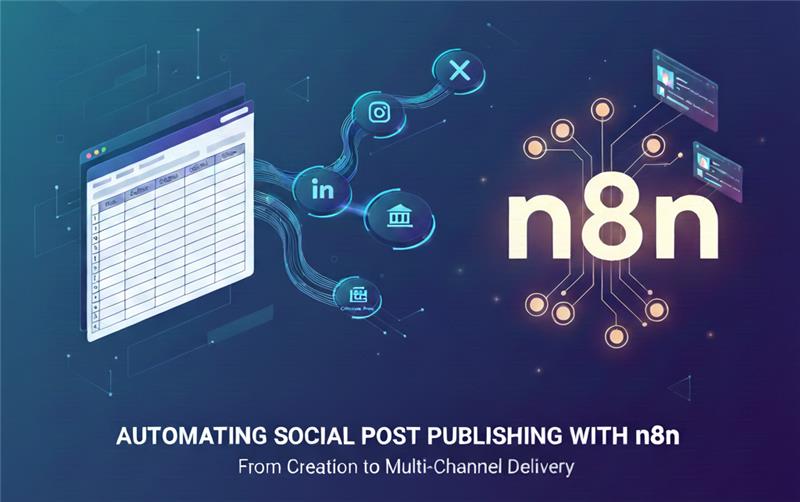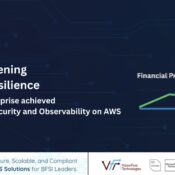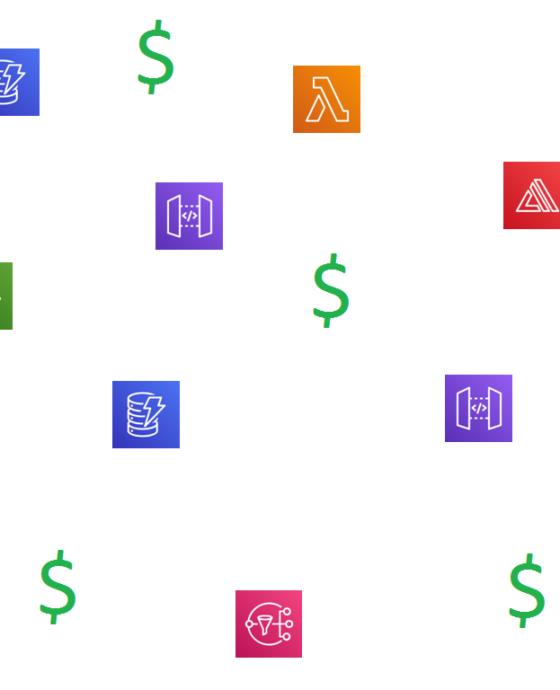Automating Social Post Publishing with n8n

Automating Social Post Publishing with n8n
In our previous post Automated Social Media Content Creation with n8n, we built a workflow that automatically creates social media content using structured inputs and AI-powered text generation. This time, we will close the loop — taking those prepared posts and publishing them automatically to multiple platforms.
This workflow turns a spreadsheet of scheduled posts into live tweets, LinkedIn updates (both personal and company) and more as needed, while tracking what has been published. It is another small but powerful step toward AI-Powered Document Automation and enterprise-grade workflow orchestration.
The Objective
Many teams generate social posts automatically but still publish them manually. Our goal:
- Fetch the next unpublished post.
- Check which channels are configured.
- Publish to Twitter (X) and LinkedIn.
- Mark the post as published.
All without human intervention.
Workflow components
The workflow contains the following major parts:

Schedule Trigger
Runs daily (or hourly) to start the publishing routine.
Get Unpublished post
Reads the next unpublished row from a Google Sheet (or Airtable). Columns typically include: date, content, image link, and channel flags.
Conditional Checks
Three IF nodes verify where to publish:
- if_tweet_exists → send to X (Twitter)
- if_linkedin_personal_exists → send to personal LinkedIn profile
- if_linkedin_company_exists → send to company LinkedIn page
Platform Actions
- create_tweet → posts the tweet using the X API node.
- create_linkedin_personal → post using LinkedIn API nodes (personal).
- create_linkedin_company → post using LinkedIn API nodes (company page).
Merge Publishing Events
Combines all results (tweets and LinkedIn posts) into one unified output stream for downstream steps. It is required as a wait step for all publishing to complete.
Set the Post Published
Updates the original sheet to mark the row as published and records timestamps or post URLs.
Why It Matters
This workflow ensures that once a post is approved, it reliably goes live everywhere — no manual copy-pasting, no missed time windows, and clear publishing history. It’s a small but significant automation layer for marketing or communications teams working across multiple channels.
You can also connect this publishing pipeline to broader enterprise systems:
- Feed content-generation engines (content created by GPT-style models) into the same pipeline to create a closed loop.
- Route analytics and performance metrics from LinkedIn/X into dashboards for team review.
- Treat the publishing step as one microservice in a larger GenAI Solutions for Enterprise architecture and extend later with LangChain Agent Orchestration style agents to automate higher-level decisions (what to post, when, and where).
Practical guide for Large Scale deployment
n8n is great for quick automation and small-to-medium workloads, but because it runs as a continuously active server, deployment and scaling require deliberate choices.
- Containerized, orchestrated deployment (recommended): Package the workflow server (n8n or an alternative orchestrator) in Docker and deploy to a container platform e.g., AWS ECS / EKS or Azure AKS. Use auto-scaling groups or Kubernetes HorizontalPodAutoscaler for instance scaling.
- LangGraph + Docker option (preferred for extensibility): For a more agent-first, extensible architecture, run LangGraph-based orchestrators in Docker containers and deploy to ECS/AKS. LangGraph supports tighter orchestration of LLM-driven agents and lets you replace or extend nodes more programmatically than n8n’s UI-first model.
- Scheduling: Use AWS EventBridge or Azure Logic Apps (scheduled triggers) to start runs rather than relying solely on a host-based cron. This decouples scheduling from the continuously-running app and simplifies operational scaling.
- Paid n8n / SaaS: If you choose n8n Cloud (paid), scaling concerns are largely abstracted away and you can avoid having to design autoscaling infrastructure. That’s a reasonable choice for teams who prefer managed operations and predictable SLAs.
- When “extreme” scale is required: n8n (self-hosted) isn’t designed for high fan-out, ultra-low-latency, or hundreds-of-thousands-of-concurrent agent runs. For extreme scale consider: a bespoke, containerized orchestration layer; or managed platform solutions such as AWS Bedrock AgentCore or Azure AI Foundry Agent Service — both designed for enterprise-grade LLM orchestration and large-scale GenAI workloads.
This approach gives you a pragmatic path: start with n8n for quick wins, move to a LangGraph/Docker orchestration on ECS/AKS for more control and scale, and consider managed agent platforms for very large, mission-critical loads.
Wrapping Up
With creation and publishing both automated, your social workflow becomes a closed feedback loop. The next logical step is performance tracking — pulling metrics from LinkedIn and X APIs into a unified analytics dashboard for engagement insights. Automation doesn’t just save clicks; it enforces consistency and repeatability — values central to any enterprise-grade digital system.







